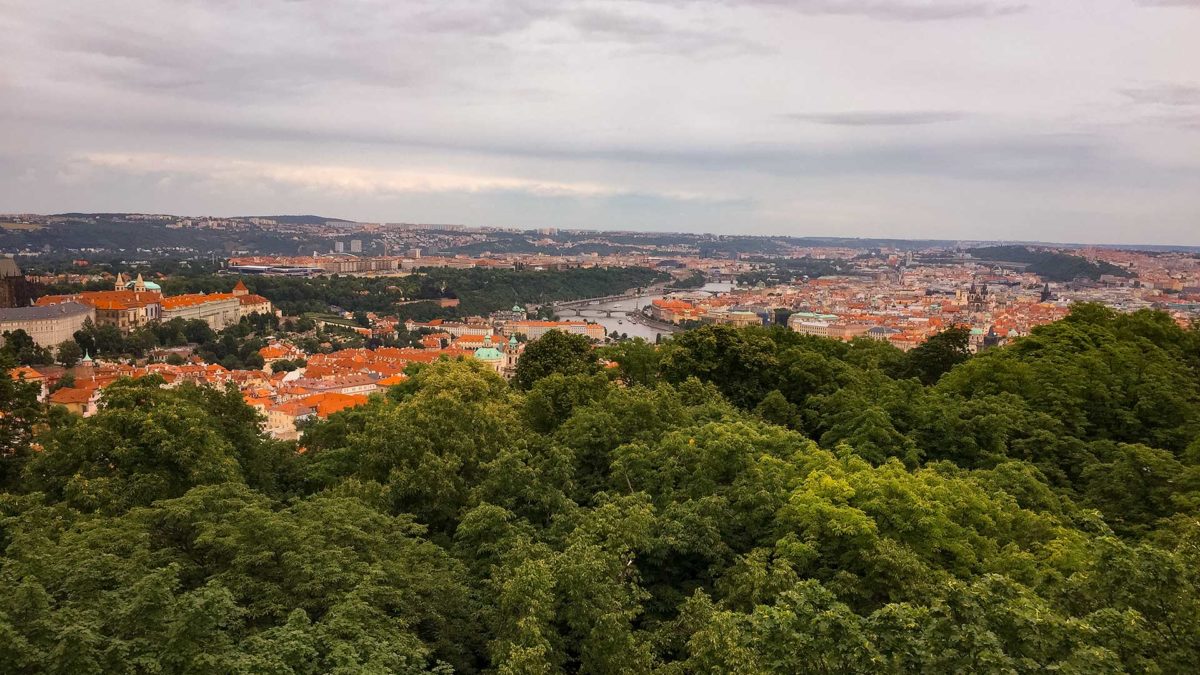
Cajun Chicken and Sweetcorn
4th March 2021
JUST ANOTHER DIET PLAN 2
7th May 2021A Long Weekend in Prague
A Long Weekend in Prague
A few years ago I was lucky enough to visit the beautiful city of Prague for three days as a birthday treat with my close friend Yeliz.
One of the most beautiful medieval cities in Europe, Prague is the capital and largest city in the Czech Republic, or Czechia as it is now known.
The Czech name, Praha, comes from an old Slavic word, práh, which means ‘ford’ or ‘rapids’. This refers to its picturesque and strategic setting on the majestic Vltava river. It has been the capital of Bohemia for centuries, and an important crossing point of the river for even longer than that.
Home to over 1.3 million people, Prague is built around five historic towns: Hradcany, Stare Mesto (Old Town), Mala Strana (Lesser Town), Nove Mesto (New Town) and the Jewish Quarter. Unlike other capital cities in Eastern Europe it was not heavily bombed during the Second World War, and as a result it has retained much of its ancient beauty and splendour. Most of the fantastic architecture, medieval charm and historic houses and structures have remained intact and protected, giving the city a unique atmosphere.
The old town is a wonder, a magnificent spectacle of elegant bridges, cathedrals, gold-topped towers, and church domes. It definitely earns its nickname of ‘City of 100 Spires’! Towering majestically above everything is the glorious Prague Castle and St Vitus Cathedral.
The country itself is relatively new, created when the old Czechoslovakia was divided into the Czech Republic and Slovakia in 1993. Four years earlier on December 29, 1989, Czechoslovakia had switched from Communism to democracy in a non-violent transition of power known as the Velvet Revolution, led primarily by student protests and demonstrations. After the Velvet Revolution, the Czech playwright, philosopher, and politician Václav Havel, one of the revolution’s pioneers, was elected president.
Although our stay in Prague was brief, it was excellent. We stayed at the Betlem Club Hotel, which was perfectly located on the main square of the gorgeous historic Old Town. We spent our first day exploring the Stare Mesto (Old Town), the Mala Strana (Lesser Town), and the Jewish Quarter, our second day braving the climb up Petrin Hill, and our third day around Karlovy Vary. This gave us a wonderful taste of almost everything Prague had to offer, while still leaving us wanting more!
If you are planning a long weekend in Prague, take a look below at my ultimate guide to the city.

Places to visit
Old Town
Vltava river
The city is defined by the Vltava and has its origins as a crossing point in the 4th or 5th centuries BC, and perhaps even earlier. Taking a stroll along the river banks, gazing at the fantastic architecture on both sides as well as the picturesque bridges that span its width, is a great way to start a day in Prague.
Stare Mesto (Old Town)
Surrounded by souvenir shops, cafes, and restaurants, the Old Town Square is the heart of the city, its most touristic area, and an incredibly lively place to be day and night.
The Monument to Jan Hus stands in the middle of the Old Town Square and marks the very middle of the historic city. Jan Hus was a Christian reformer, a priest, and one-time rector of Prague University. His thoughts and works formed the foundation of the Hussite movement. The memorial was built in 1915 to mark the 500th anniversary of the murder of Jan Hus, and is built next to what used to be the Prime Meridian.

Astronomical Clock
The Astronomical Clock (Pražský orloj) in the south-west corner of the square is probably the most visited building in Prague, and a tourist favourite. It was built in 1410 and showed the positions of the sun and the moon, as well as telling the time. Every hour it provides a show for its audience, with the procession of the Twelve Apostles to mark the hour. According to local legend, the clockmaker Kadan Mikulas was blinded after completing his great work, so he would be unable to recreate such a spectacular achievement for anyone else. Each side of the clock is decorated with a cautionary personage, with Arrogance represented by a figure gazing into a mirror, Greed by a figure carrying a golden bag, Death by a skeleton, and Lust by a Turkish figure (!) with a mandolin.
Old Town Hall
Prague Old Town Hall is also located on the Old Town square and is another of the most visited spots in the city. It started life as a large house owned by one of the richest families in the city until it was bought by the councillors of the Stare Mesto in 1338. Over the years it has been extended many times as additional houses were bought and converted, which gives it an extremely unusual architectural look and feel.
Church of Our Lady before Týn
The Church of Our Lady before Týn dominates the Old Town and is an incredibly impressive building. A wonderful example of Gothic design, its two grand towers stand over 80m tall and give the church its impressive look. Construction of the current church began in the 14th century, although previous places of worship on the site date back to the 11th century. The original medieval interior has been preserved and it is a wonderful example of the beautiful religious design of the age.
Kinský Palace
The Kinský Palace is an art museum owned by the city, housed in a former palace on the Old Town square. The palace was built in the 18th century in the Rococo style and has been a public art museum since 1949.

Powder Tower (Prašná Brána)
The Powder Tower dates back to 1475 and was originally built to mark the division between the New Town and the Old Town, acting as one of the original gates into the city. The tower got its name in the 17th century when it was used to store gunpowder and weapons. It suffered extensive damage during the Battle of Prague in 1757 and many of the exterior sculptures were replaced in the 19th century.
Alphonse Mucha Museum
Alphonse Mucha is my favourite artist, so the chance to visit his museum was a wonderful treat. Although Mucha spent the first part of his career in Paris during the Art Nouveau period, he returned to Bohemia-Moravia when he was 43 and painted an extraordinary monumental series of paintings known as the Slav Epic, depicting the complete history of the Slav peoples. This is displayed in the National Gallery in Prague, but his own museum was opened in 1998 and is an amazing experience, the only museum in the world dedicated to the life and work of this truly important artist.
Jewish Quarter
Josefov or the Jewish Quarter is located very close to the Old Town square, at the other end of Parizska Street. The Quarter is full of museums and it is a great idea to buy a collective ticket which gives you access to all of them when you enter – you can buy tickets on Vězenská Street. Josefov is one of the Prague’s oldest and most significant residential areas. The Jewish community first put down roots here in the 13th century, when Prague was still in its infancy as a city.
Statue of Franz Kafka
Franz Kafka is one of Prague’s most important and famous residents, known worldwide for his remarkable literature. You can find Kafka attractions and locations scattered across Prague, but in the Jewish Quarter his statue is the main event. Installed in 2003, it depicts the author riding on the shoulders of a headless figure, referring to his 1912 novel Description of a Struggle.
St Agnes of Bohemia Convent
Founded in 1234 by Agnes, the sister of King Wenceslas I, it is one of the oldest convents in Europe and one of the oldest surviving examples of Gothic architecture in Bohemia. It is a delightfully cool and peaceful place to escape the heat of the day and a very impressive sight overally. It has an interesting history as well, used as both a warehouse and a shelter for the homeless during the 18th century. It now houses a collection of paintings and sculptures from the 13th and 16th centuries.
Old New Synagogue
Prague has an…interesting take on the word ‘new’ (more on this later), and the Old New Synagogue is actually the oldest Gothic building in the city and Europe’s oldest active synagogue. It was built in 1270 and was called ‘new’ as it came after the original Old Synagogue which was demolished in 1867 and replaced by the Spanish Synagogue.
Old Jewish Cemetery
We visited the Old Jewish Cemetery, but being completely honest I wasn’t very impressed. It is huge and extremely historically significant, but unless you are very interested in the history of the Jewish community in Prague there isn’t a lot to see.
Pinkas Synagogue
The Pinkas Synagogue is the second-oldest surviving synagogue in the city, created in around 1535 from a private dwelling. It has some interesting Renaissance architectural features and a permanent exhibition of pictures drawn by children in the Theresienstadt Ghetto, but if you are short of time Prague’s other synagogues are more worth your time.
Spanish Synagogue
The Spanish Synagogue, on the other hand, is a must-see. Built in the Moorish Revival style in 1867, it is a glorious sight, with a central dome, some wonderful stained glass, and a striking frontage with a crenellated roof. Although it is the newest synagogue in the Jewish Quarter it is easily the most impressive.
Nove Mesto (New Town)
The New Town in Prague is hardly new. Like the Old New Synagogue, it got its name back in the 1400s when it was developed, in order to differentiate it from the Old Town. At this point, however, at over 600 years old it is hardly new anymore!
Wenceslas Square (Václavské náměstí)
Wenceslas Square is one of the city’s most important squares, right after the Old Town square. This is where the statue of Saint Vaclav is, as well as some of the most attractive Art Nouveau style buildings in Prague. Until the 19th century, however, it had a slightly different atmosphere, being primarily used as a horse market. It was redesigned to emulate the boulevards of Paris and has been the site of some of the most important events in Prague’s history.
National Museum
One of the major landmarks in Wenceslas Square, the National Museum is the centre of Czech national history. The museum was completed back in 1890, and you can still see the Neo-Renaissance architectural influences. Amongst its fantastic collections you can see minerals, archaeology, numismatics, and natural history.
Mala Strana (Lesser Town
Charles Bridge
Prague’s most famous river crossing, the Charles Bridge is a glorious icon of the city. It connects Prague Castle and the Mala Strana with the Stare Mesto district and offers one of the best views of the city there is. It was built by King Charles IV between 1357 and 1400, replacing the older Judith Bridge.
The Charles Bridge is over 500 metres long and 10 metres wide, and is only open to pedestrian traffic. The most eye-catching aspect of the bridge are the 30 statues that line the parapet, each one with a fascinating story to tell. Amongst these figures is the statue of St John of Matha, St Felix of Valois, and St Ivan, the largest statue on the bridge, which depicts the Christians’ captivity by the Turks. Made in 1714, this statue is a classic example of the Ottoman Fear of the time.

Church Of Our Lady Victorious
A small, relatively non-descript church built in 1584, the Church of Our Lady Victorious is not incredibly fancy, although it does have a nice altarpiece which was sent from Rome when Prague was re-Catholicised during the Counter-Reformation.
Petřín Hill
Petrin Hill is almost entirely covered by parks and is one of the most popular recreation spots for locals in the city. It rises over 300m above sea level and offers unparalleled views of Prague. In the 15th century it was covered in vineyards, but these days the tourists have replaced the vines.
You can reach Ujezd, the street at the foot of the hill, on buses numbered 12, 20, 22, and 23. From Ujezd there is a charming funicular railway that takes you up to the top of Petrin. You can also walk, although it is a steep climb and takes around 35-40 minutes.
Petrin Observation Tower (Petřínská Rozhledna)
Inspired by the design of the Eiffel Tower following a visit to Paris, members of the Club of Czech Tourists collected donations and designed and built this observation tower at the top of Petrin Hill. You can climb to the top for a wonderful view of the city.
Mirror Maze (Zrcadlové bludiště Petřín)
Designed to look like a miniature castle, Petrin’s mirror maze is a treat for kids. After laughing at your bizarre and grotesque reflections, at the centre of the maze you will find a diorama depicting the battle of the Charles Bridge against the Swedes in 1648.
Stefanik Observatory (Štefánikova hvězdárna)
Named after Slovak astronomer Milan Rastislav Štefánik, the Stefanik Observatory is a great attraction for fans of science and the night sky. There are two main telescopes, as well as a statue of Milan Rastislav Štefánik.
Strahov Monastery (Strahovský klášter)
Founded in 1143 by Jindřich Zdík, Bishop John of Prague, and Vladislaus II, Duke of Bohemia, the Strahov Monastery is one of Prague’s most significant religious buildings. On top of this, it is the home of the National Literary Museum, and houses the country’s oldest volumes and literary works.
The Petrin Funicular
The best way to the top of Petrin Hill is to use the charming, historic funicular railway that runs from Ujezd to the summit. Built in 1891, it was originally powered by water, but switched over the electricity in 1914.
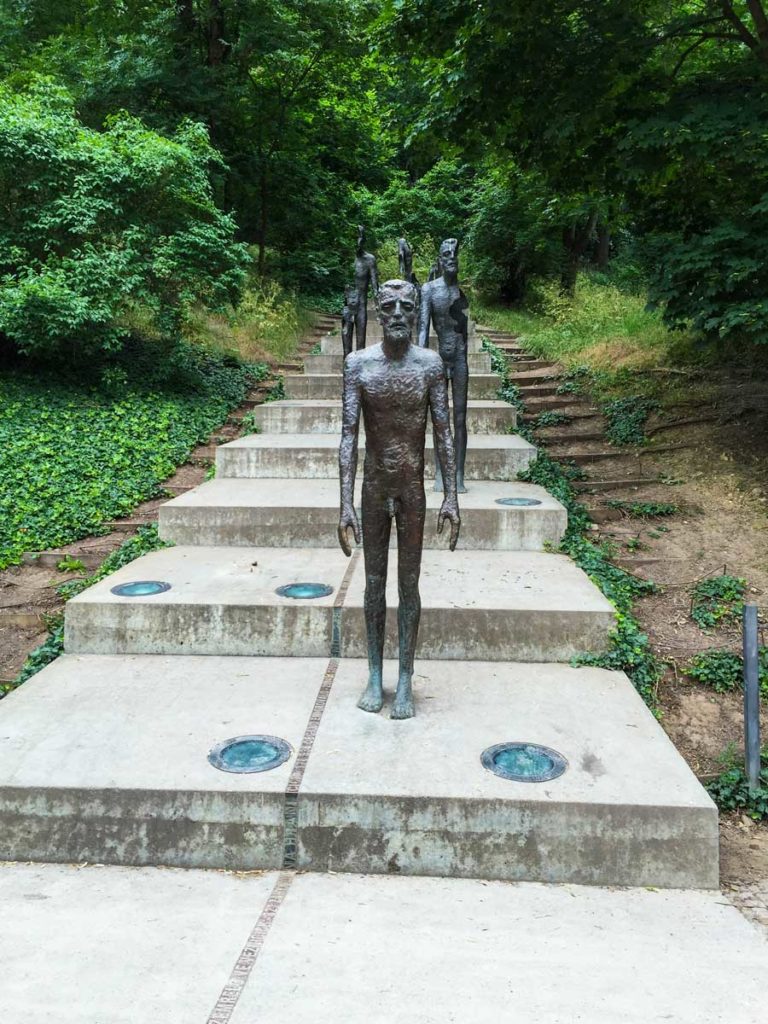
Memorial to the Victims of Communism
At the entrance to Petrin Park is a small yet moving set of sculptures, the Memorial to the Victims of Communism. A commemoration of those who died under the regime from 1948 – 1989, the figures show how political prisoners in particular were affected by the Communist authorities, with a full human figure in the front but a body destroyed from behind.
St. Nicholas Church
The most beautiful of the two churches in the city that carry this name. This church dominates the Mala Strana, boasting stunning Baroque decorations. Built between 1704 and 1755, it also offers remarkable interiors, including a preacher chair, altar panels, and gorgeous frescoes in the side chapels.

In Franz Kafka’s Footsteps
Franz Kafka is one of Prague’s most famous residents. The author of The Trial, The Metamorphosis, and In The Penal Colony, Kafka called Prague home for much of his life. You can visit the house where he was born, next to St Nicholas Church, as well as the house where he lived with his sister, no. 22 Golden Road in Prague Castle. There is also a Kafka Museum where you can find out more about his life and works.
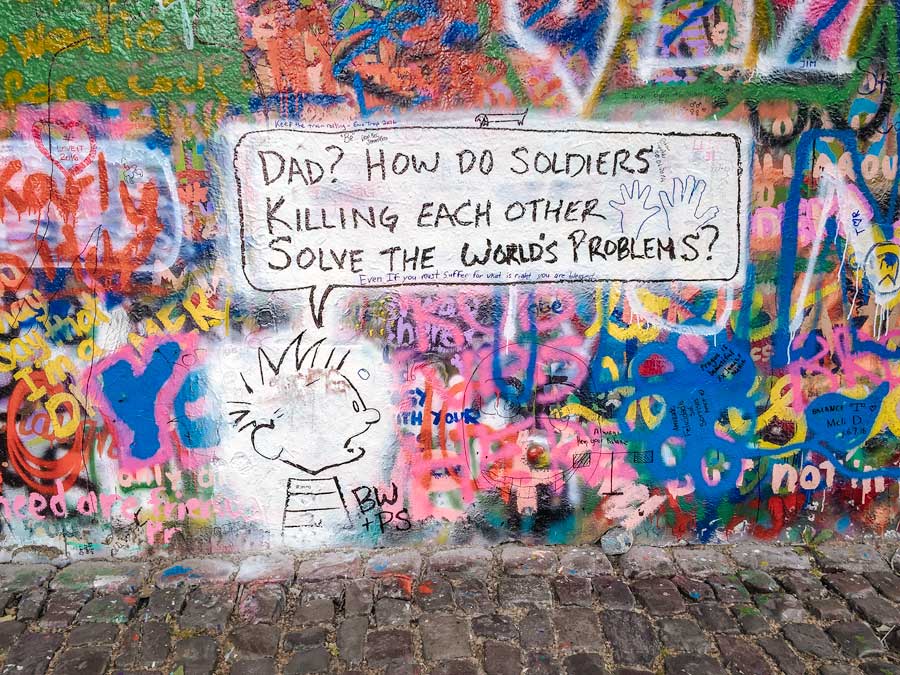
Lennon Wall (Lennonova zeď)
A mural painted in memory of John Lennon, one of the legendary Beatles. The mural was commissioned in reaction to the shooting of John Lennon in 1980. Here there is also a ‘love lock’ bridge where people attach locks to the small bridge and make wishes. On the other side of the bridge is the John Lennon pub, designed to look like a traditional English pub.
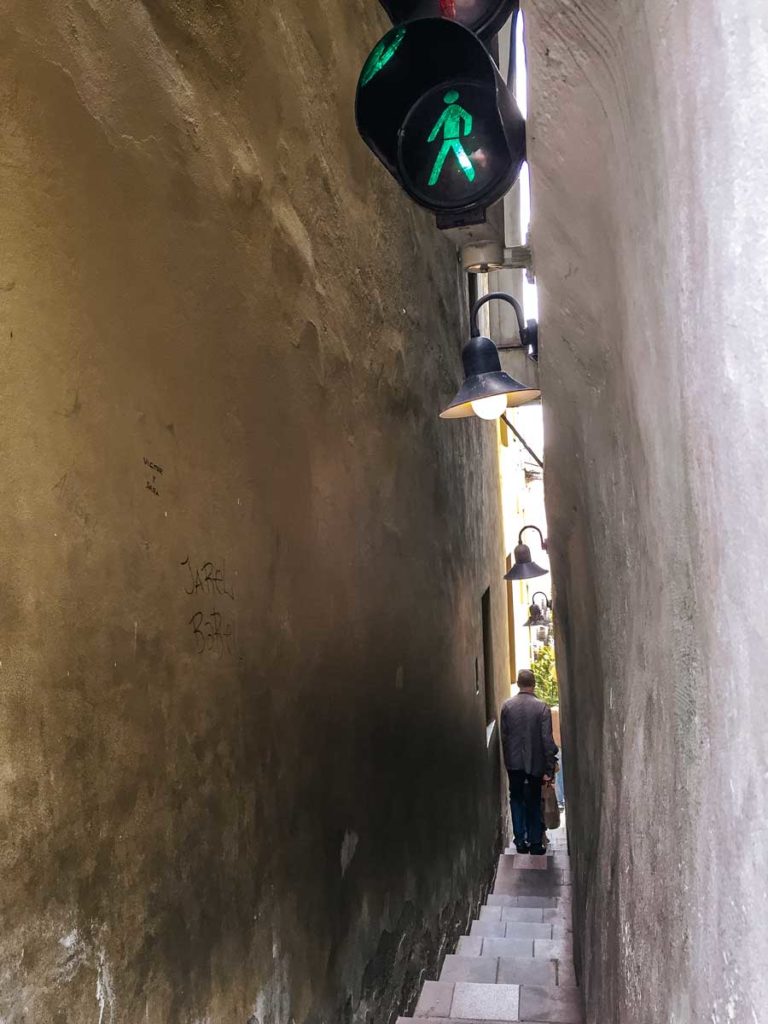
Praque’s Narrowest Street
One of the most curious places in Prague, this tiny street is only 50 cm wide, squeezed in between two buildings off U Lužického semináře street. Due to the streets width a set of traffic lights has been installed to allow people to come and go without getting stuck!
Kampa Island
Kampa Island is formed by the Devil’s Stream branch of the Vltava River. It is home to the Museum Kampa, a modern art gallery, as well as an enormous chair sculpture by Magdalena Jetelova.
Prague Castle
One of the city’s most famous and prominent landmarks, Prague Castle takes time to fully explore. More of a district than a castle, there are fully formed neighbourhoods within the walls and you could easily spend a day wandering around the charming historic streets.
Prague Castle is the largest ancient castle in the world. It was originally built as a residential palace with large gardens for the nobility of Prague. Boasting an extraordinary location overlooking the Vltava, it also has a more functional defensive fortress behind it. Nowadays it is used by government ministries and administration, as well as housing the Bohemian crown jewels.
There has been a fort on the site since 870, but the Romanesque palace that forms the foundation of the current castle was built in the 12th century.
The castle also includes St Vitus Cathedral, built in 1344. It was the coronation site for the kings and queens of Bohemia, as well as their final resting place. It is an impressive example of Gothic architecture and boasts some exemplary stained glass.
The castle also offers the joys of the Belvedere Palace and Gardens, the Old Royal Palace, the Golden Road, St George’s Basilica, St George’s Monastery, the Prague Castle Picture Gallery, and the Royal Gardens. In fact, perhaps you would need more than one day to fully explore this extraordinary site!
Vyšehrad
According to legend, Vyšehrad was the location of the first settlement that later became Prague. It is a lovely little area about 3km southeast of Prague Castle on the banks of the Vltava. Mostly known for Vyšehrad Fort, it also has an important cemetery where some of the Czech Republic’s most famous citizens are buried, as well as Prague’s oldest Rotunda of St. Martin, from the 11th century.
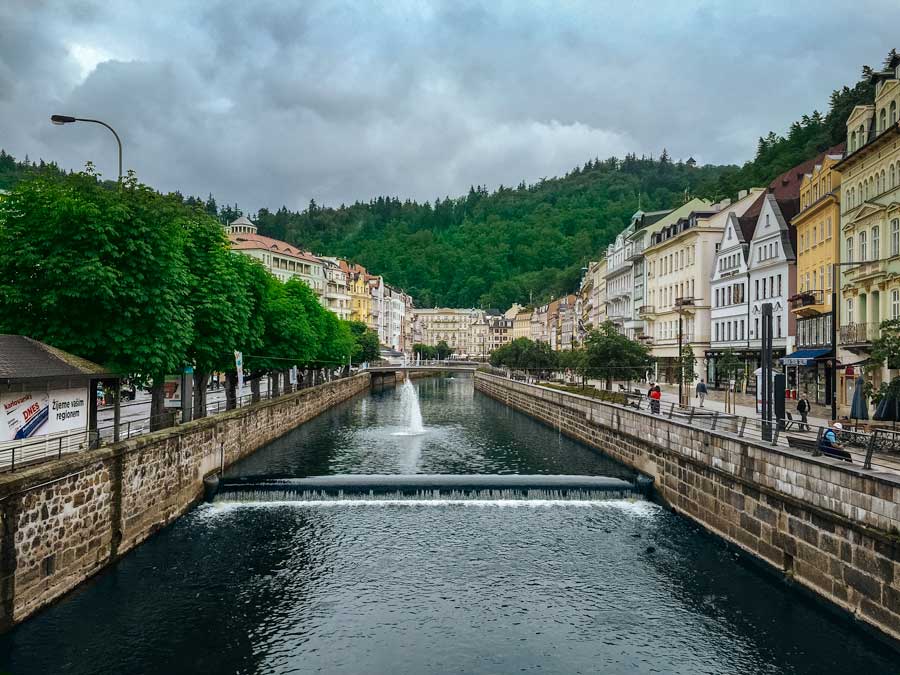
Outside Prague
Despite being outside the city, no visit to Prague would be complete without a day trip to Karlovy Vary, the famous town of hot springs founded by Emperor Charles IV.
Supposedly founded in 1370 by the Emperor after a hunt (during which one of his dogs fell into the hot springs in pursuit of a deer), the spa city was a favourite of Czech nobility and royalty. It is a deeply stylish and attractive town, as generations of nobility wanting to be close to and impress the kings and queens have competed in building architecturally impressive edifices here. These days it is a gorgeous site, all pastel colours surrounded by green nature and a calming, healing ambiance. Mustafa Kemal Atatürk, the father of modern Turkey, stayed here for treatment and his hotel room and belongings have been preserved as an attraction. The town is about two hours by bus from Prague, and is a must-visit.
